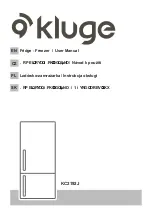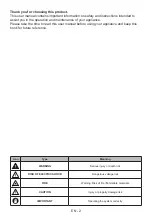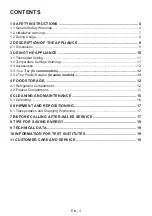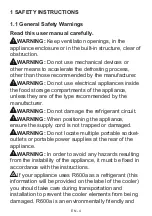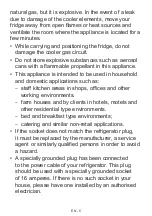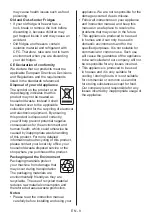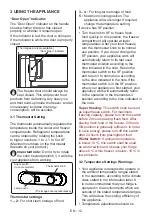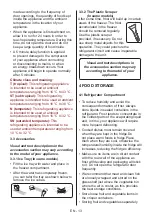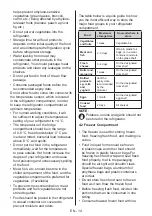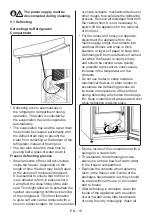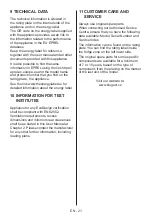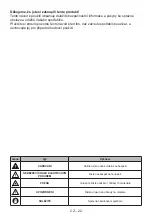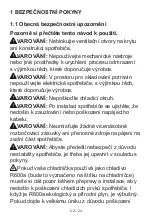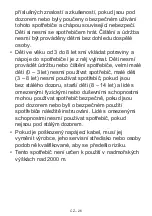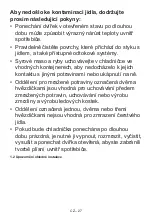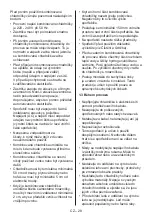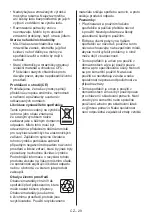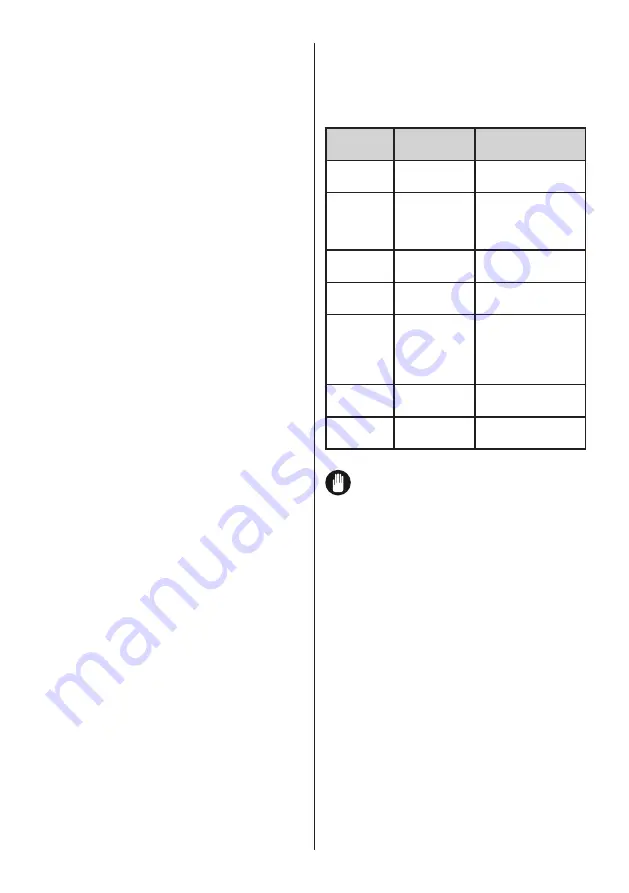
EN - 14
helps prevent ethylene-sensitive
vegetables (green leaves, broccoli,
carrot, etc.) being affected by ethylene-
releaser fruits (banana, peach, apricot,
fig etc.).
• Do not put wet vegetables into the
refrigerator.
•
Storage time for all food products
depends on the initial quality of the food
and an uninterrupted refrigeration cycle
before refrigerator storage.
•
Water leaking from meat may
contaminate other products in the
refrigerator. You should package meat
products and clean any leakages on the
shelves.
• Do not put food in front of the air flow
passage.
•
Consume packaged foods before the
recommended expiry date.
Do not allow food to come into contact with
the temperature sensor, which is located
in the refrigerator compartment, in order
to keep the refrigerator compartment at
optimum temperature.
• For normal working conditions, it will
be sufficient to adjust the temperature
setting of your refrigerator to +4 °C.
•
The temperature of the fridge
compartment should be in the range
of 0-8 °C, fresh foods below 0 °C are
iced and rotted, bacterial load increases
above 8 °C, and spoils.
•
Do not put hot food in the refrigerator
immediately, wait for the temperature
to pass outside. Hot foods increase the
degree of your refrigerator and cause
food poisoning and unnecessary spoiling
of the food.
• Meat, fish, etc. should be store in the
chiller compartment of the food, and the
vegetable compartment is preferred for
vegetables. (if available)
•
To prevent cross contamination, meat
products and fruit vegetables are not
stored together.
•
Foods should be placed in the refrigerator
in closed containers or covered to
prevent moisture and odors.
The table below is a quick guide to show
you the most efficient way to store the
major food groups in your refrigerator
compartment.
Food
Maximum
storage time
How and where to
store
Vegetables
and fruits
1 week
Vegetable bin
Meat and
fish
2 - 3 days
Wrap in plastic foil,
bags, or in a meat
container and store
on the glass shelf
Fresh
cheese
3 - 4 days
On the designated
door shelf
Butter and
margarine
1 week
On the designated
door shelf
Bottled
products
e.g. milk
and
yoghurt
Until the
expiry date
recommended
by the
producer
On the designated
door shelf
Eggs
1 month
On the designated
egg shelf
Cooked
food
2 days
All shelves
NOTE
:
Potatoes, onions and garlic should not
be stored in the refrigerator.
4.2 Freezer Compartment
•
The freezer is used for storing frozen
food, freezing fresh food, and making ice
cubes.
•
Food in liquid form should be frozen
in plastic cups and other food should
be frozen in plastic folios or bags.For
freezing fresh food; wrap and seal fresh
food properly, that is the packaging
should be air tight and shouldn’t leak.
Special freezer bags, aluminum foil
polythene bags and plastic containers
are ideal.
• Do not store fresh food next to frozen
food as it can thaw the frozen food.
•
Before freezing fresh food, divide it into
portions that can be consumed in one
sitting.
• Consume thawed frozen food within a
Summary of Contents for KC2192J
Page 86: ...52317836...

